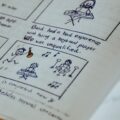Discover how stuffed animals and storytelling can ignite creativity and imagination in children. Learn about their role in emotional comfort, cognitive development, and educational benefits. Also, get tips for parents to create engaging stories.
Introduction
Stuffed animals have been a staple in children’s lives for generations. Cuddly companions provide more than comfort, playing a key role in child development. Storytelling pairs well with them to boost this impact.
This mix is fun. It also fosters creativity and imagination. These are key for a child’s growth. This article explores the interplay between stuffed animals and storytelling. It explains how they inspire creativity and imagination in children.
The Role of Stuffed Animals in Child Development
Stuffed animals are often a child’s first friend. They give comfort. They are a source of security in stressful or scary times. Beyond emotional support, stuffed animals are crucial in developing social skills.
Through make-believe, children project personalities and emotions onto their stuffed companions. They practice empathy and communication in a safe place. Children’s understanding benefits from role-play. It helps them see the world around them.
Storytelling as a Tool for Imagination
Storytelling has been a fundamental part of human culture since ancient times. For children, storytelling is a gateway to creativity. It allows them to explore new worlds. They can also understand different views and develop problem-solving skills. When combined with stuffed animals, storytelling becomes interactive.

It makes narratives engaging and relatable. This interactive storytelling is not only fun but also teaches. It helps children to grow their vocabulary and grasp complex ideas simply.
Building Creativity Through Play
Imaginative play is crucial for developing creative thinking. Stuffed animals often become characters in a child’s imaginative world. They act out scenarios that range from normal activities to fantastical adventures. For example, a teddy bear can transform into a knight, a doctor, or an explorer.
This change depends on the story being told. These scenarios encourage children to think creatively and solve problems. They also help them express themselves freely. Encouraging independent play with stuffed animals helps children use their creativity. It helps them do so without outside influence. It fosters their independence and confidence in their imagination.
Parental Involvement in Storytelling
Parents play a vital role in enhancing the storytelling experience. By telling stories with their children, parents can create rich, imaginative worlds. The stories are both educational and entertaining. Here are some tips for parents to create engaging stories:
- Use a variety of voices and expressions to bring characters to life.
- Incorporate elements of surprise and adventure to keep the story interesting.
- Encourage children to contribute to the story, fostering their creative input.
The benefits of parental involvement in storytelling are profound. It strengthens the bond between parent and child. It improves the child’s listening and comprehension. It also nurtures a love for stories and books.
Educational Benefits of Storytelling with Stuffed Animals
Storytelling with stuffed animals is not only fun but also educational. It aids in language development. Children hear new words and sentences. Problem-solving skills are enhanced as stories often involve overcoming obstacles and finding solutions.
Additionally, storytelling helps develop emotional intelligence. Children learn to understand and control their feelings. They do this by relating to characters and their experiences. This fosters empathy and emotional control.
Real-life Examples
Many parents and educators have seen the good effect. It happens when stuffed animals are combined with storytelling.

Jane, a mother of two, saw her children’s creativity and language skills improve. She sparked this change by adding stuffed animal stories to their nightly routine.
Educators have also reported this. Children who do this storytelling have better communication. They also have a greater ability to express their thoughts and feelings.
Choosing the Right Stuffed Animals for Storytelling
Selecting the right stuffed animals is crucial for maximizing the benefits of storytelling. Here are some factors to consider:
- Versatility: Choose stuffed animals that can fit into various story scenarios.
- Durability: Ensure the toys are well-made and can withstand frequent use.
- Choose toys that are safe. They should be free from small and toxic parts, especially for young kids.
Popular and versatile options include classic teddy bears. They can be adapted to various roles. Other options include lions, elephants, and rabbits. They can add diversity to stories.
Conclusion
Stuffed animals and storytelling are powerful tools. They nurture a child’s creativity and imagination. They offer emotional comfort. They also improve cognitive and social skills. They provide a fun way to learn and grow.
By using these practices, parents and teachers can create an imaginative environment. It encourages children to explore their creativity and develop their unique talents. Embrace the magic of stuffed animals and storytelling to joying. They inspire creative thinkers and dreamers, leading to happy living.
My name is Andrea Thompson and I’m a home based freelance writer. I’m 23 years old, married to my best friend, and mother to a wonderfully independent and opinionated 3 year old girl and step-mother to a sweet seven year old boy. I live in a tiny, little town in Kentucky, where I spend my free time fishing with my kids.
Writing has always been my passion, which I followed through high school, and for a while in college. Life happened, and once I discovered we were pregnant, I switched directions; opting for the healthcare industry because of the stability.
Finally, years later, I was in a place where I could leave the day job that never truly made me happy, and pursue my dreams. I’ve built, and am still building, my writing career from scratch. But, I’m passionate and I’m good at what I do. And, in the end, I can prove to my daughter that she can do anything she wants with this life.





